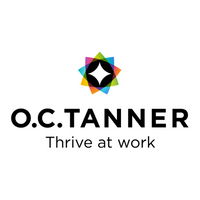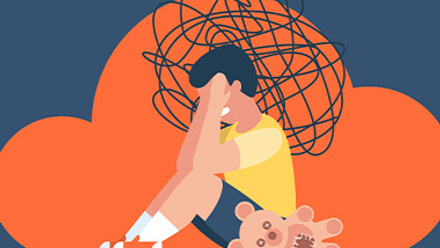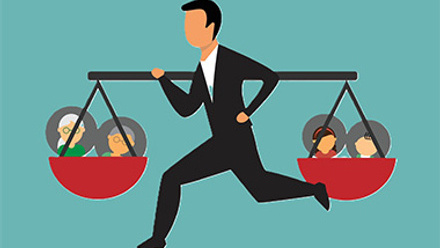How to use recognition to reduce burnout

When employees don't feel their best at work, physically, emotionally or socially, they will eventually burn out. Decreased work/life balance, feeling like work has a negative effect on health or a decreased sense of belonging can increase risk of burnout by 22%, 40% and 56%, respectively. So what can employers do to reduce the chances of employee burnout? They can use the power of recognition.
Burnout facts
Burnout can creep up on people and before they know it, they’re exhausted. Day-to-day life becomes a struggle and constant demands become overwhelming, damaging their physical, mental and emotional health. In fact, our 2021 Global Culture Report found that Covid-19 has increased burnout by 15% and up to 81% in non-thriving organisations. Even mild burnout has a negative impact on companies, leading to a 220% decrease in the probability of highly engaged employees. On top of this, employees who say they very often or always experience burnout at work are 63% more likely to take a sick day, 2.6 times as likely to leave their current employer, and 13% less confident in their performance.
Everyone’s coping mechanisms and support networks vary, meaning that daily stresses can impact people in different ways. It’s hard to predict who is more likely to experience burnout, however what can be managed is the employer’s treatment of its employees to ensure the chances of burnout are minimised. Being proactive with recognition giving is one key tool that can have a significant impact.
Using recognition to minimise burnout
A negative workplace culture in which there’s a lack of appreciation has been found to be a strong predictor of burnout. Our Culture Report finds that when there’s no consistent organisational strategy for recognition in place, the odds of burnout increase by 29%.
So effective recognition is key for a healthy and positive workplace culture. In practical terms this means:
Making recognition an organisational priority: If it's not considered important enough by the leaders, little time and effort will be put into getting it right. When recognition isn't regarded as a priority, employees are 38% less likely to feel appreciated.
Timely and effective recognition for all employees: This means providing praise on a regular basis and, ideally, daily. Recognition must also be given in a timely manner so that the reasons for showing appreciation are still fresh in everyone's minds.
Being deliberate with appreciation: Ensure time is put aside to praise the employee, giving details as to what they have done that deserves recognition and how they are effectively contributing to the bigger picture. When a "thank you" is deliberate and thought through, employees will feel 116% appreciated.
Ensure sincerity: Give people praise as individuals, highlighting what they have specifically contributed and why it's important. Sadly, 40% of employees feel that the recognition they receive at work is an empty gesture.
Link recognition to rewards: Rewards should go hand-in-hand with recognition. And we aren’t just talking gift vouchers. Symbols of appreciation can often have far more of an impact than monetary awards, as well as rewards which support wellbeing, such as allowing employees to finish an hour earlier.
Link recognition with values: Every time an employee is appreciated, it needs to be made clear how their behaviour is in line with the organisation’s values. This recognition-values link ensures the 'right' behaviours are praised and are more likely to be repeated again and again.
Don’t link recognition to possible causes of burnout: It’s easy to praise someone working evenings and weekends to meet a deadline, but praising the overtime they’re putting in, makes it a desired behaviour that others feel they need to replicate. Yes, praise people’s dedication, but not elements that could lead to burnout.
Recognition and wellbeing must go together
While recognition helps to reduce burnout, it shouldn’t take place in isolation but must be prioritised alongside wellbeing. This means creating a workplace in which leaders advocate for their people’s health and wellbeing, encouraging them to take breaks, providing growth and development opportunities, showing empathy towards their individual situations and ensuring ongoing support.
The power of recognition
Never underestimate the power of employee recognition when it’s well executed. People who feel cared for, appreciated and a sense of belonging are more likely to be highly engaged, feel connected to the organisation, its leaders and their colleagues, and be fit and healthy. With burnout having such devastating consequences for individuals and organisations, it’s time to take a fresh look at recognition.
Research findings have been taken from O.C. Tanner’s Global Culture Reports.
The author is Beth Hall, senior client success manager and mental health first aider at O.C. Tanner Europe.
This article is provided by O.C. Tanner Europe.
Supplied by REBA Associate Member, O. C. Tanner
Giving teams the integrated tools they need when, where and how they need them.







